On my Pacific Cascade Ry. layout I have a “loads in - empties out” set of tracks with a saw mill on one side of the mountain and lumber yard on the other. I model the late 1960s - early 1970s BN merger period in the Pacific northwest. I have read that bulkhead flatcars with center sills did not come into use to transport lumber until the early 1980s. My question is, what did the railroads transport packaged lumber in, before the introduction of these bulkhead flatcars?
Bulkhead flatcars would have been around in your modelling era, but not the ones with the centre-beam. Lumber was also shipped on regular flatcars and in gondolas and boxcars, too. I don’t recall seeing too much in the way of packaged wood products in those days, though: I think most of it was still in boxcars.
While I model the late ‘30s, my road uses regular flatcars, mostly 50’-ers like this Walthers car:
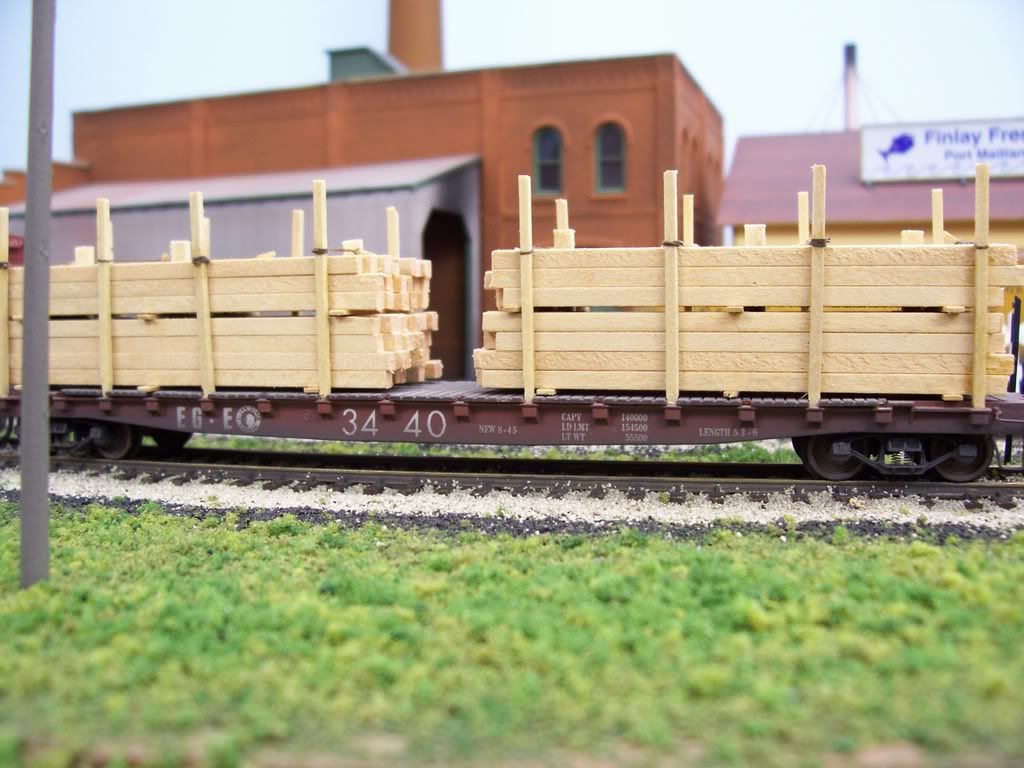
…and bulkhead flats, like this modified Athearn car:
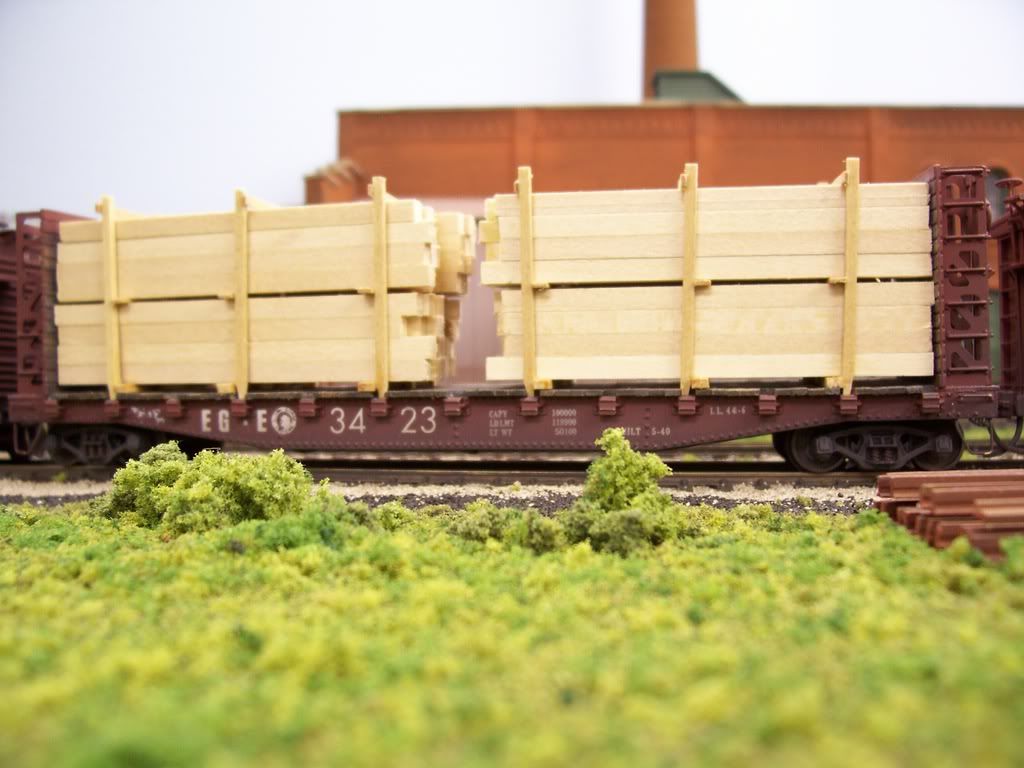
Boxcars, too, although this one is obviously empty:
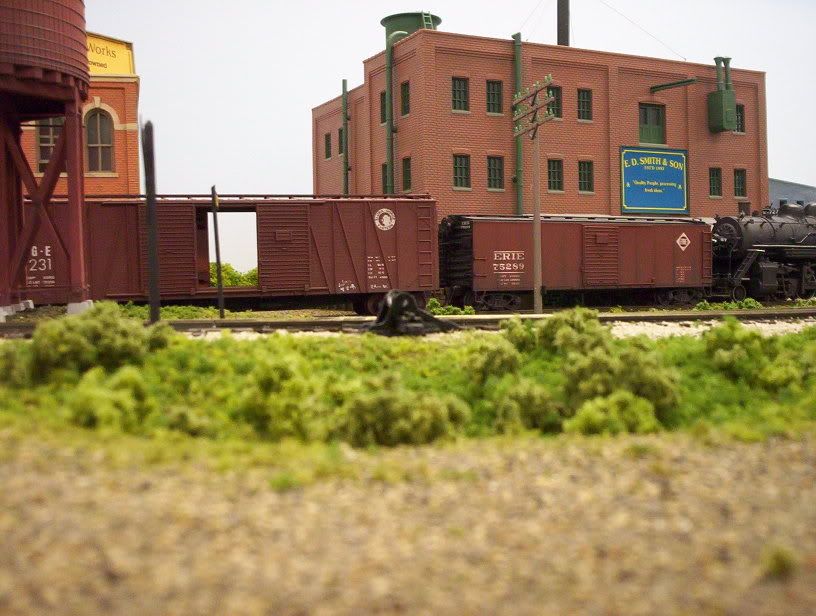
Wayne
Thrall Car built the first versions of the CENTERBEAM 60’ Center Sill Flat Cars for the Northern Pacific and the Burlington Northern between 1968-1970. There were five cars for NP and five cars for the BN. They have a unique diamond shape opening in the center-beam. I have seen two of them on the GTW/CN line. BN ordered 190 CENTERBEAM Flat Cars from Thrall Car that were delivered starting in 1977.
Andrew
I have always been interested in the Southern Pacific and they included a great deal of lumber in their consists. I do know a lot of lumber was shipped in box cars. Yes, you can’t see it in there with the doors closed.
Thrall Car All-Door Boxcars.
Andrew
Look up the Northern Pacific Historical Society website.
Andrew
Probably a little late for your period:
Western Pacific “opera window” centerbeam flat cars numbers 1401-1410 were built in November 1977
The NP cars from 1966 were the first centerbeam cars.
Mainline Modeler magazine had a series of articles on lumber shipments in boxcars, including how the prototype banded the various sizes shipped, how they were arranged in the boxcars, etc.
The author also showed some model loads (HO I believe) he had made. One model had the car doors open to show the load, and it was quite effective visually. This was a partial load that was placed just in the door area to represent a full load. He also had another model with a removeable roof to show the entire interior loaded. Also quite effective.
If you have access to these magazines and are interested, let me know and I’ll go back and come up with the specific issue dates.
It will be mostly true flat cars and box cars. The BN did have some of the 64’ centerbeam cars that came out in the late 70’ but it’s too late for your era.
Since you can not rail fan it now how about a DVD of the BN from back then from that area? Maybe something like Charles Smiley Presents: Empire of the North. Just do goggle search and see if it’s for you.
ratled
One of the advantages of shipping model lumber in boxcars is that you don’t have to build the load. [swg] Even a doorway-filling load of dimensional lumber will consume a lot of stripwood or strip styrene. If you want to make flatcar or loads, making them hollow will save some material, but to look convincing, you still need two full sides and a top for each pile, in addition to the stub ends representing the interior boards. I’m saving up to build a couple of flatcar loads of 2"x10"s or 1"x12"s, and maybe something similar for a 50’ boxcar.
Here are some loads built from stripwood - these are heavy timbers used in bridge building, cribbing, or other heavy construction. The loads are built-in-place to ensure an accurate fit on each particular car. If you have cars from different manufacturers, the width of the deck or number of stakes may differ between brands, and it’s best to mark the interior of the load with info denoting on which car(s) it will fit.
For a regular flatcar, I built eight individual piles, then stacked them two-wide and two-high. “Stickers” separate the piles from the car’s deck and from one another, with heavier material used to separate the piles vertically - these can be single pieces or built-up from multiples - their purpose is to place the outside faces of the piles tight against the side stakes. The side stakes are then bound together with “cable” - in this case, black thread. I tied one end around the top of one stake and secured it with ca. The thread was then drawn over the pile, around the stake on the opposite side of the car, then back to the first stake, where it was tied and secured with ca. Pull the thread tight before tying, but don’t bend those stakes. After the ca has cured, insert a short length of scale 2"x2" between the cables near the centre of each pile, then use it to twist the cables, tightening all slack out of them. &
Found on therailwire.net
“Actually, you do have a few. The original design came from Canadian National, circa 1969, and the first cars were built by Thrall for NP/BN. Only about ten if memory serves. They were 60-footers with hexagonal openings in the center girder. Thrall also built some considerably longer versions for the SCL around 1972 for hauling prefab steel roof trusses, like those used in big industrial warehouses. The NP/BNs later went to NOKL (Northwestern Oklahoma) and the SCLs went to NS and the Georgia Northeastern (GNRR). I saw a GNRR a couple of months ago in service. Haven’t seen an NOKL in several years, but I used a photo of one to lead off my centerbeam article in RMJ back around 1995. Obviously, their rarity means it was unlikely you’d have seen one in the '70s, unless you model BN or SCL. And the first of the opera window conterbeams were built around 1978 for BN, MILW and WP. Again, these are 60-footers and are the prototypes for the Micro-Trains and Front Range 60-foot beams. 73-foot opera window beams came in the mid '80s, and truss beams in the late '80s. So yes, an NSC/Trinity truss beam is a “Nineties” car. We ('90s modelers) still need one. Scott Chatfield” " |
|---|
The GN had a fleet of 50’ double door boxcars for lumber. 40’ double doors were also used. Some 40’ cars had lumber doors on the end but they rarely used by the late 60s. In 1965 wrapped lumber became popular on flat and bulkhead flat cars. Unwrapped lumber loads on flat cars were limited in number. Poles were also shipped by flat car unwrapped. I just looked this all up in the Thompson Great Northern Equipment books.
One pole load, comin’ up [swg] although it’s in a gondola with an accompanying idler flat:
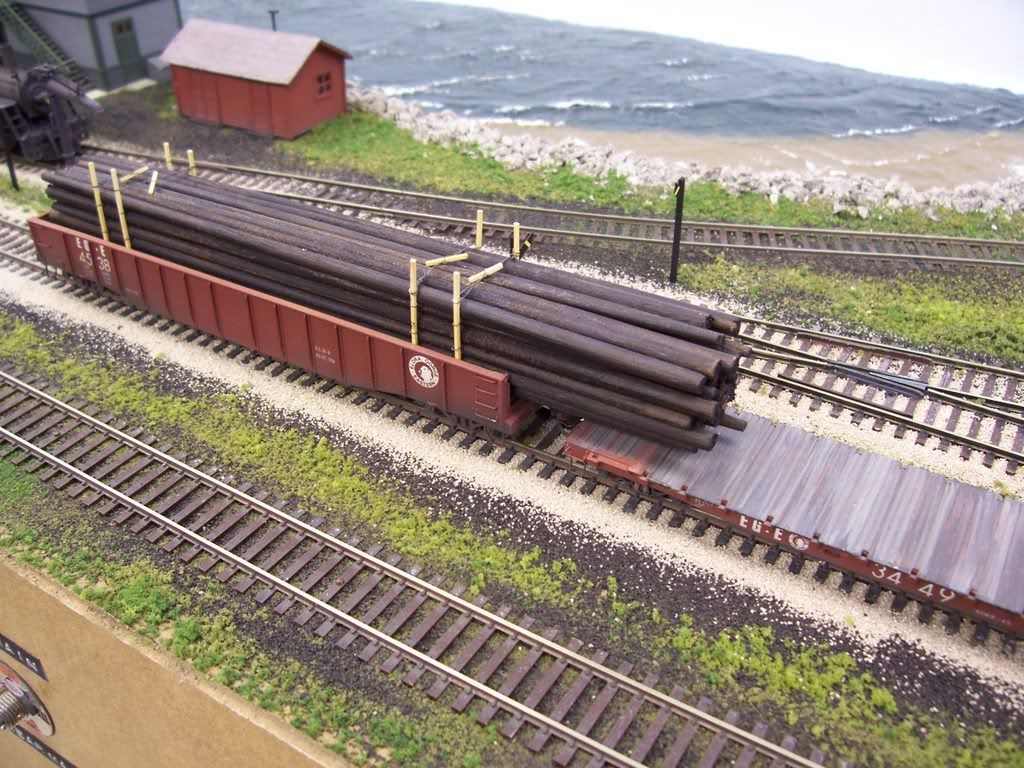
Wayne
I still own two Athearn 50 ft flatcars with bulkhead ends that I picked up from the local hobby shop in the mid 1960’s. I just had to have these cars because all the wood I had seen being shipped was usually carried on standard 40 and 50 ft flatcars with the bulk of it in boxcars. There were boxcars with end doors made specifically for transporting timber if memory serves me. A check of old Car Cyclopedias should give the dates when the various cars were in wood hauling service.
Enjoy the hobby; railroads are a dynamic and ever changing industry.
Broken Tie
Some boxcars, like this Milwaukee Road car, had small lumber doors in the “A” end of the car.

True end-door boxcars were usually used for shipping machinery or vehicles - they could be 40’- or 50’-footers, like the car shown below. Not the best view of the car’s end, but there are two full-height doors, hinged at the outside corners of the car. When open, the opening was almost the full width of the car. As seen below, the hinges are visible:

The bulkhead car to which you’re referring was marketed as a pulpwood car, and had a narrow raised section running the full length of the floor, located over the centre-sill. Pulpwood was supposedly loaded crossways on the car, two rows extending the length of the car and piled like…well, cordwood. All of the loads I saw passing through town here used bulkhead-type cars, 50’-ers or longer, but they had heavy-duty (perhaps permanent) sidestakes, with the wood piled parallel to the car’s centre-sill. I think this was because of the mechanical means by which the cars were loaded and unloaded.
I purchased several of those Athearn cars, shaved the raised strip off the deck and re-scribed the board lines, then cut them in two at their mid-point. After rejoining them with a well-braced 10’ length of .060" sheet styrene and sanding off all the rivet detail from the sides, I fabricated new sides from .020" sheet styrene. Strip styrene was used to add new welded-on ribs and create top chord members for the sides.
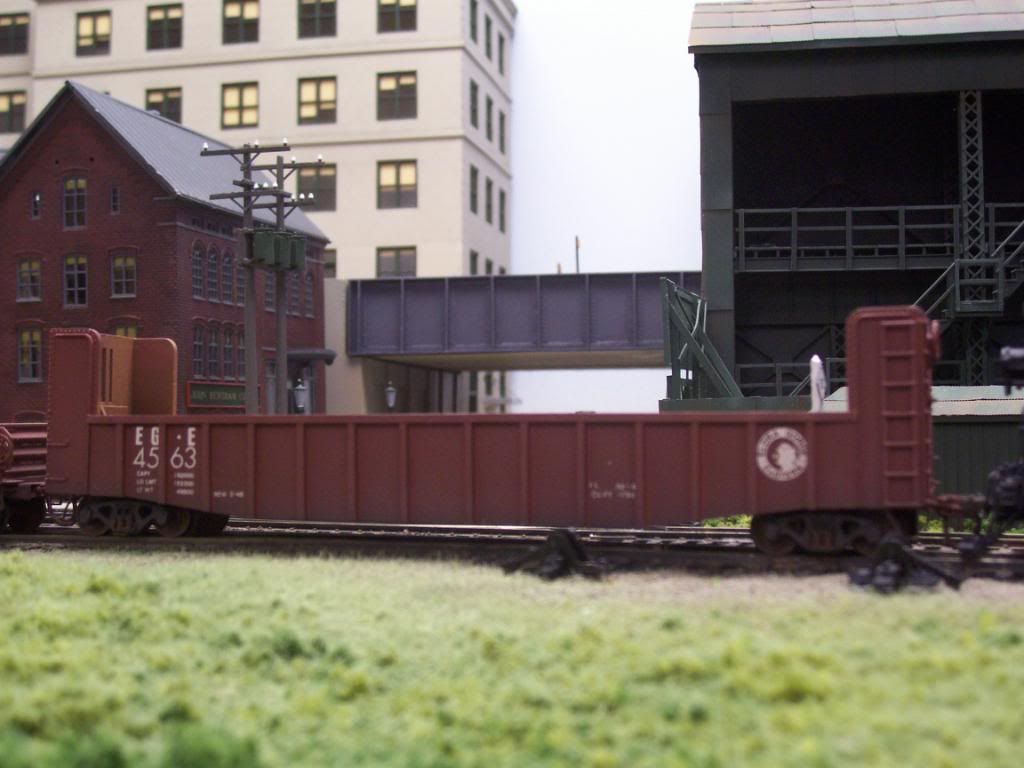
I use these cars primarily for pipe and fabricated metal tanks, usually loaded using a crane, but they’d be okay for
Sorry to repeat myself but…the first centerbeam flats were the NP centerbeam cars delivered in 1966. As it happens, a pic of them noting this was in the December page of the NPRHA 2010 calendar, so I’ve been looking at a pic and caption all the previous month!!
I lived the first 21 years of my life about 200 feet from a large lumber dealer.
In the late 1950s and early 1960s, they received lumber, sometimes packaged and sometimes merely bundled on skids, in bulkhead flat cars (no center beam)…also in boxcars.
Stix,
Is it possible you could scan the picture of the NP bulkhead flat on the December NP calendar and send it to me at
pacific.cascade.ry@comcast.net .
Thanks,
Capt. Brigg